Some of the latest PC tech just isn’t made for everybody. A mobile color sensor, for instance, might be the perfect tool for artists who need to scan a surface, identify its color, and import that color to their graphic design project — but for the rest of us, such products remain a curiosity we never find a reason to adopt. I used to feel that way about portable monitors.
In fact, I started out a skeptic about multi-monitor setups in general. Then my wife replaced her desktop computer with a more powerful laptop and sent her old gear to the electronics recycling center. Like any self-respecting DIYer, I harvested her rig’s usable parts, including her old monitor. Wanting to put it to use somehow, I carefully positioned it on a stack of books as an extension of my existing display, booted up my desktop, and watched curiously as both displays came to life. I wondered, now what?
The second display sat off to the side until one busy afternoon when I had too many active windows going. Without thinking too much about it, I dragged a few of them over to the other screen, keeping documents I was developing on one screen while positioning reference materials and support programs on the other. Right away, it felt natural. Within the month, I couldn’t imagine life without the second screen.
I’ve lost count of the advantages the second screen affords. When I’m creating new content, I always have one window open for notes, one for the document I’m developing, and another for researching fast facts on the fly. A fourth window for my music player fits right in, with enough leftover space for a spreadsheet if I need to reference data.
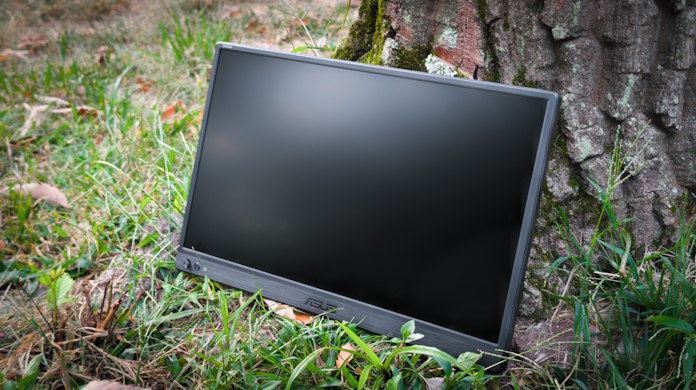
But that was a desktop monitor. Was it inevitable that I would extend my multi-monitor habit to my laptop? For years, I thought portable displays were a novelty item for gamers or traveling executives. When I noticed the cost of mobile monitors reaching new lows, I couldn’t resist. With a list price of just $109 (USD), the ASUS ZenScreen MB169CK was more affordable than I expected — and then I found it on sale! As soon as the ZenScreen was out of its shipping box, it was integrated into my daily routine and making my life easier.
| ASUS ZenScreen MB169CK | |
|---|---|
| US | ASUS |
| CA | ASUS Best Buy |
Out of the box and straight into my shoulder bag
My ZenScreen MB169CK package started with a 16-inch panel display (15.6 inch viewable) that is significantly larger than my laptop’s 13.3-inch screen. The enclosed screw-on kickstand stabilizes the display in both portrait and landscape modes, doubling as a wall hanger if need be. Two cables were included: one USB-C connector that also powers the display from my laptop, and the other for HDMI. Both cables are braided and feel ruggedly durable. I was also pleased to find a zippered protective case made of sturdy canvas. I had debated whether to buy a case at the same retailer where I purchased the ZenScreen, and that’s thirty bucks that I’m glad to still have in my pocket.

Best of all, after I zipped the ZenScreen and its USB-C cable into the canvas case, the whole package was light and slim enough to slide comfortably into my shoulder bag. I don’t even notice the extra weight, and there’s plenty of space left for my laptop, folders, and a notepad. This pack goes everywhere, from campus to my local brewpub for a working lunch. I’ve officially adopted the mobile multi-display lifestyle.
I realize why people can’t imagine living without their mobile monitors
As one of the 33 million Americans who is starting their own business, I always have an eye out for tech that can boost my productivity and help me respond to unexpected circumstances. The other day, I observed that my business partner packs his portable display everywhere he goes. When I asked why, he shrugged and said he couldn’t stand working without it. I learned what he meant on the day we held a three-hour workshop presentation for seven important clients. Unpredictably, that workshop proved to be my ZenScreen’s first public performance.
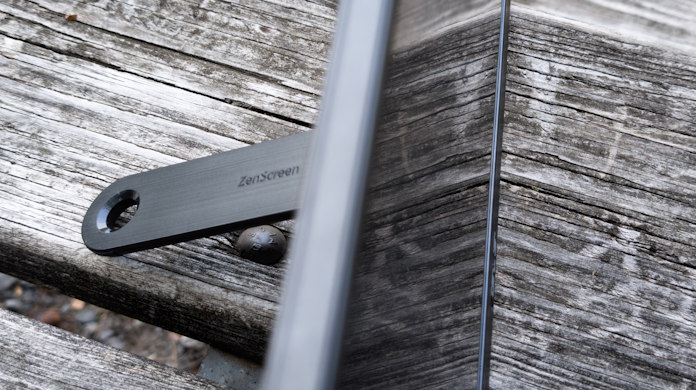
We had scheduled the session in a building on the same day it was being re-roofed. Workers were scraping old tiles and pounding nails all day, while we tried to focus our clients’ attention on our content. The building manager suggested we relocate to a different room in the basement. That room was quieter, but the move meant walking away from the 60-inch screen we were using for our slideshow.
This kind of thing happens a lot to people who make their living with presentations. Whenever you enter a new conference space or classroom, you can never predict what presentation tech will be available. In the end, simply attaching the ZenScreen to my laptop and running the slides on the second display got the job done. The clients viewed the content while I referenced my notes and ran the presentation from my laptop. Since then, I take my ZenScreen MB169CK into every classroom and conference center where I’m scheduled to talk.
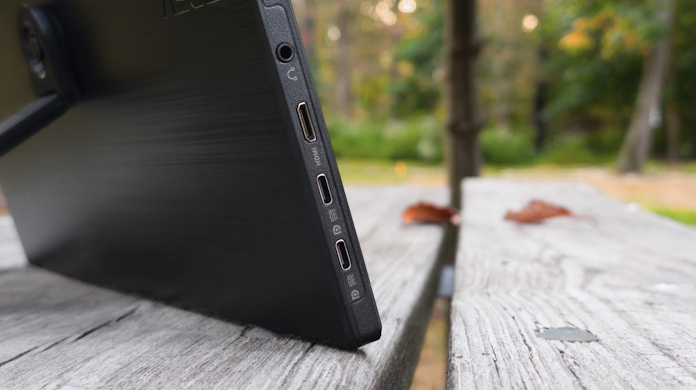
This experience taught me how the ZenScreen provides peace of mind. One major challenge of building a business is the constant worry about what could go wrong. In high-pressure situations like that workshop, the worry can supercharge. Now I always have a suitable plan B and lower levels of anxiety.
The ZenScreen is flexible enough for all my gigs
Like many people, I make my living from multiple income streams. Each requires different tech, but I’ve discovered a use for the ZenScreen in them all. Take teaching. When it’s time to grade papers, whether I’m in office hours or eating lunch, I fit the students’ submissions on one display and refer to the assignment details on the other. A similar setup works for planning lessons, with my content on the smaller display and the course text and research materials on the larger. These workflows have conditioned me to look for a second monitor even when it’s not there. Whenever I find myself without the ZenScreen, I come down with a minor case of phantom limb pain.
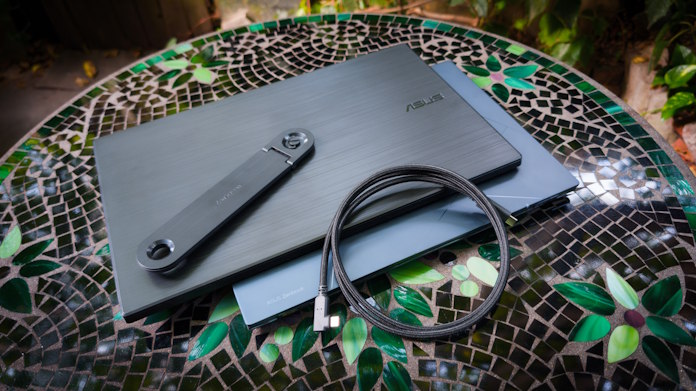
Besides teaching, I’m also a student in the process of retraining for a new career. And I honestly don’t know how I could succeed in my Statistics class without the ZenScreen MB169CK. When the time comes to study and I’m at home, I relax in my lounge chair with the course text on the ZenScreen and the data analysis software I’m learning to use on my laptop.
This is where the ZenScreen’s brightness and versatility shine. By plugging it into the same charger I use for my smartphone, I boost the screen’s brightness to maximum. By turning the ZenScreen to portrait, I fit more than a page of the textbook onscreen. With this larger display, I read instructions for making charts and graphs from a sample data set, then turn to my laptop to run the analysis. Thanks to the ZenScreen’s Eye Care features and TÜV Rheinland certification, I’ve read more than five hundred pages of Stats without eye strain.
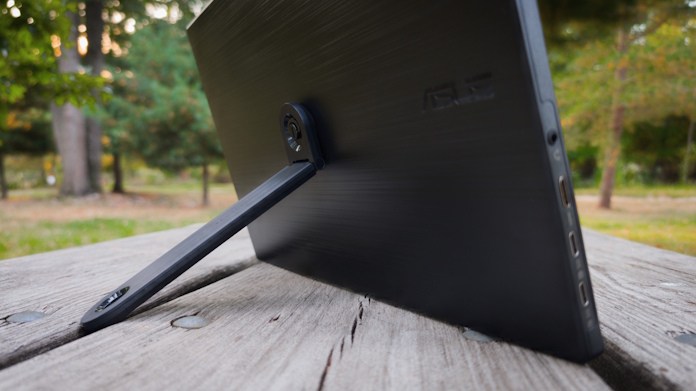
If I had to do this homework on a single display, I would quickly lose patience. To finish my homework, I’d end up shackling myself to the multi-monitor setup on my desktop computer, which would feel like unfair confinement after I got used to all this mobility.
And when I sit in Stats class, I can see I’m one of the few students with a multi-monitor display. Some students improvise by using their laptops along with the janky old desktop computers provided by the university so they can have two screens. I feel a little sad that, once they leave the classroom, they’ll be stuck with a single display.
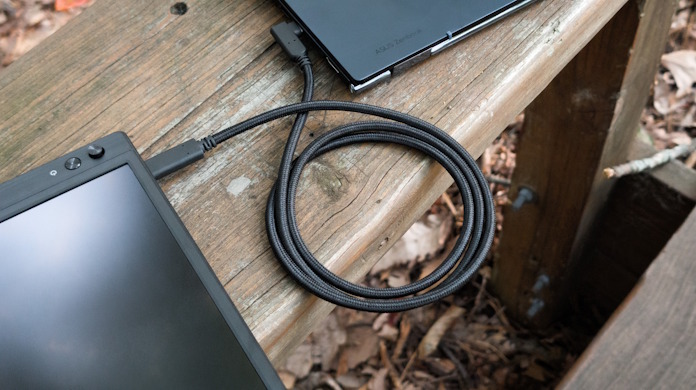
Then I connect the USB-C cable to the ZenScreen and my laptop, activating both monitors. I switch the ZenScreen to landscape mode, providing plenty of space to run multiple windows side by side. One houses the PowerPoint the professor is running, another holds my notes, and a third shows the data analysis software. Whenever necessary, there’s enough room for a fourth window with the textbook. After I add my cordless mouse and laptop charger to the mix, I essentially have all the functionality and productivity of my home desktop PC, usable anywhere on campus.
The ZenScreen is handy during playtime too
Like a lot of modern couples, my wife and I frequently relax together in the evenings, each of us in front of a different screen. The other night, I remembered the ZenScreen’s HDMI connector and plugged it into my PlayStation. This setup let me revisit some favorite games like Red Dead Redemption 2 while my wife watched her current favorite show on a smart television. Strangely enough, I started feeling closer to my wife.
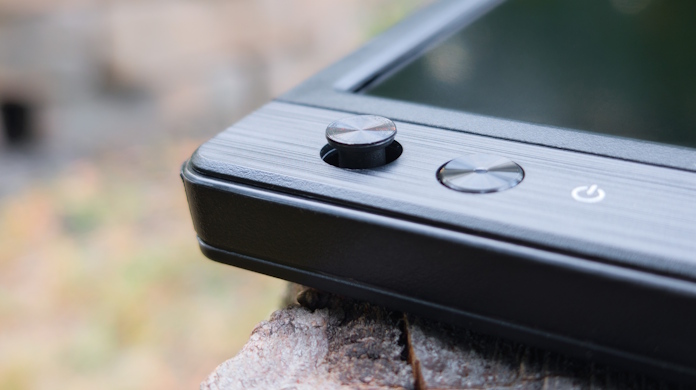
Normally, I have to game on the TV we both share. Sometimes it feels like I’m competing with my wife for the TV. If she walks into the room and I’m in the middle of a shootout, I start feeling guilty, wondering whether she wants to watch her shows. The ZenScreen gave me the brand-new experience of video gaming guilt-free before my wife goes to bed.
I also enjoy the novelty of retreating to my backyard and streaming video on the ZenScreen while browsing the web on my laptop. It’s not lost on me that I could do homework back there too, but let’s not contaminate the backyard with serious concerns. The backyard is a space for tranquility and cocktails.
What I might order next
The other day, I noticed a gentleman sitting at the bar of my local brewpub with his mobile monitor. He was playing a handheld game that he clearly knew his way around and casually sipping a lunchtime beer between victories. What great colors and resolution on that display, I thought. Was he an esports professional? Should I upgrade to a mobile display like his?
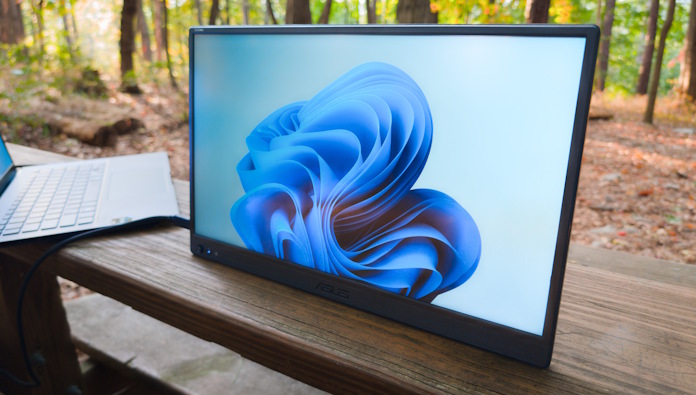
Now that I’ve stepped through the mobile monitor gateway with my ZenScreen MB169CK, questions about buying a second display come naturally. The ASUS ZenScreen lineup offers a lot of options, and each provides a boost in quality for every step in price. I’m attracted to the 1080p 144Hz display of the ZenScreen MB16AHG, which would provide smoother animations in my PlayStation games. But I’m a sucker for a touchscreen, so I’d probably upgrade to the ZenScreen Touch MB16AMTR. With its 10-point touch functionality, it provides the same FHD display and a screen size equal to my own ZenScreen. I can happily imagine scrolling through my textbooks by touch.
Then again, why not upgrade to OLED with the ASUS ZenScreen MQ13AH? With those deep blacks and vivid colors, my presentations would pop off the screen. I might even take up image and video production for my business. But if I really want to maximize my productivity with plenty of high-quality screen space, I’d be better off with the ZenScreen Duo OLED MQ149CD 360-degree foldable portable monitor. That baby is the most expensive of the bunch, but for the price I’d get two premium 14-inch OLED monitors in one foldable, ultraportable 2.4-pound package. The twin OLED panels with VESA DisplayHDR True Black 400 and 1920×1200 resolution would provide the greatest abundance of high quality onscreen real estate.
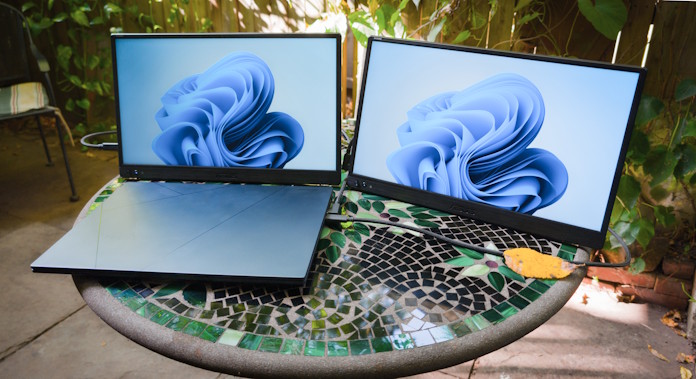
The moment I start thinking about upgrades like this, I remind myself that I won’t hand to send my ZenScreen MB169CK to the electronics recycling center. After I upgrade to a laptop with multiple Thunderbolt 4 or USB4 ports, like the ASUS Zenbook S14, I’ll simply add my existing ZenScreen to my portable multi-monitor setup.
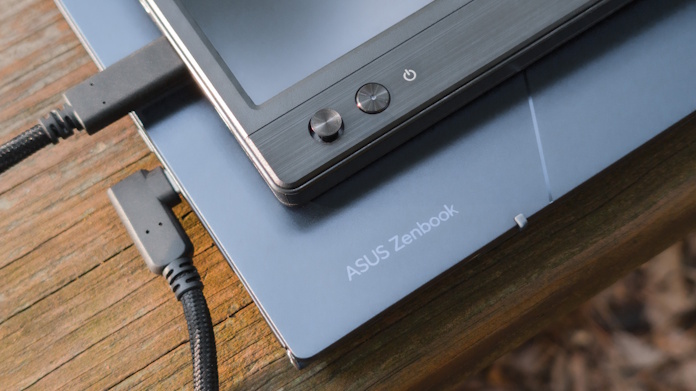
I can already see myself sitting in front of three or four different screens like some kind of world-commanding mastermind. If that sounds silly to you, just wait until you take your first steps into the mobile multi-monitor lifestyle. Start with an entry-level model like my ZenScreen MB169CK and see what you can do with it. At that price point, you won’t find a better deal for boosting your productivity while offloading some presentation anxieties.
| Model | Features | US | CA |
|---|---|---|---|
| ASUS ZenScreen MB169CK | 16-inch USB-C FHD | ASUS | ASUS Best Buy |
| ASUS ZenScreen MB16AHG | 16-inch USB-C FHD 144Hz | ASUS | ASUS |
| ASUS ZenScreen Touch MB16AMTR | 16-inch USB-C FHD Built-in battery | ASUS Amazon B&H | ASUS Newegg Amazon |
| ASUS ZenScreen OLED MQ13AH | 13.3-inch USB-C FHD OLED | Insight Mobile Advance | |
| ZenScreen Duo OLED MQ149CD | Dual 14-inch USB-C FHD OLED Foldable | ASUS Amazon B&H Walmart | ASUS Newegg Amazon Best Buy |

